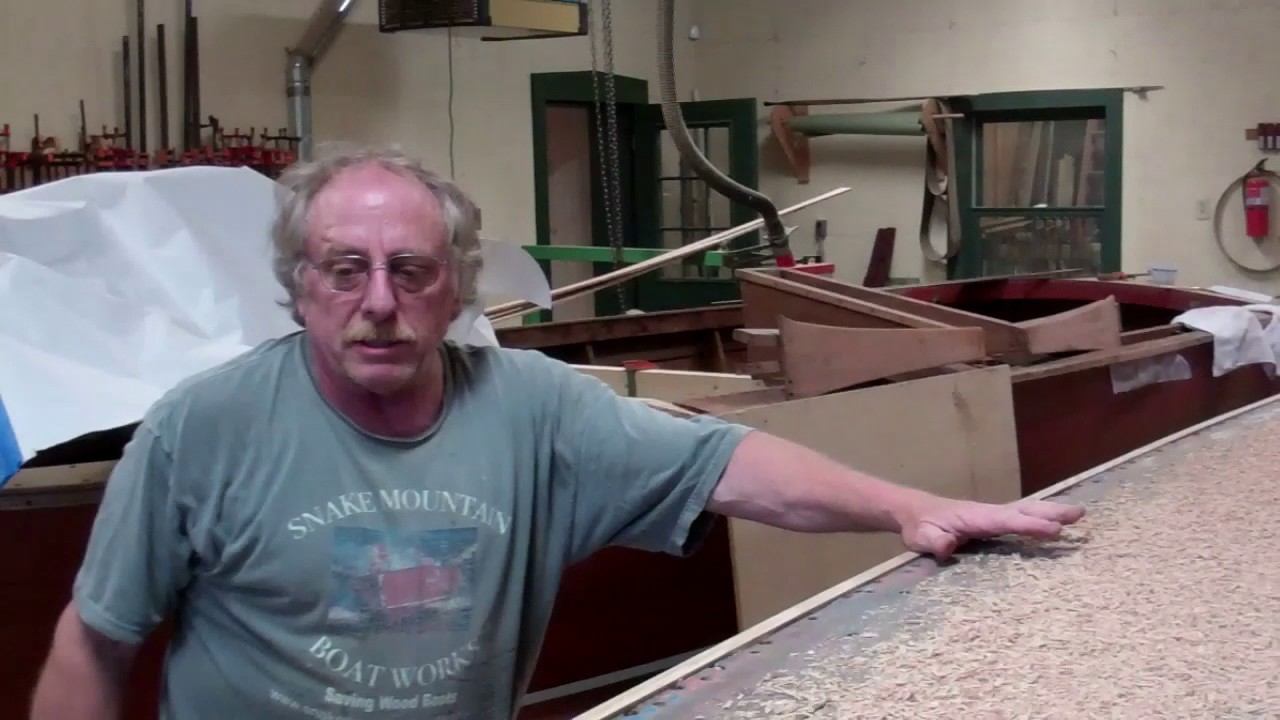Haven’t seen it snow white oak before? Well now you can as flakes fly off the newly fabricated chine under John’s power plane.
The chine must be trimmed to being fair with the bottom planks. John uses the power plane to take the surface down to within 1/8” of the planks. Then he reaches for his favorite “finishing” took, a 3” x 8” Makita belt sander.
By the end of today, he will be finished fairing the new chine. Tomorrow we will work with him as we begin fabricating new bottom planks. (We are saving and reinstalling the three mahogany planks the forward ends of which sweep upward through and terminate above the boot stripe. These have been carefully cleaned, sanded and have had their back sides sealed with CPES.
Additionally, the garboard planks will not be fabricated until all other planks are in place.
That way we can scribe these planks to the actual width and shape remaining after all others are in place. Meranti is our go-to material for bottom planking. Click here to appreciate why and how it differs from genuine mahogany and Sapele.
Working from the chine inward, each plank will temporarily installed, and the garboard plank will be rough cut and then scribed to fit.
All of them will then be released and sealed with three coats of CPES, with the second coat being applied immediately following the first, which delivers enhanced adhesion between coats, and enhanced penetration into the plank’s fibers.
Final installation involves copious amounts of 5200, a continuous layer at least 1/8” thick is required, which translates into cases and cases of 5200. I will be sure we have ten cases on hand, along with at least 1,200 silicon bronze wood screws.
Well, you will see what I mean when we get to that point, but very soon, this elegant girl will be sporting a brand new bottom, on its way to becoming a True 5200 Bottom once we’ve applied five coats of Interlux 2000E Two-Part Epoxy Primer (barrier coat.)
She will be right-side-up before long!

